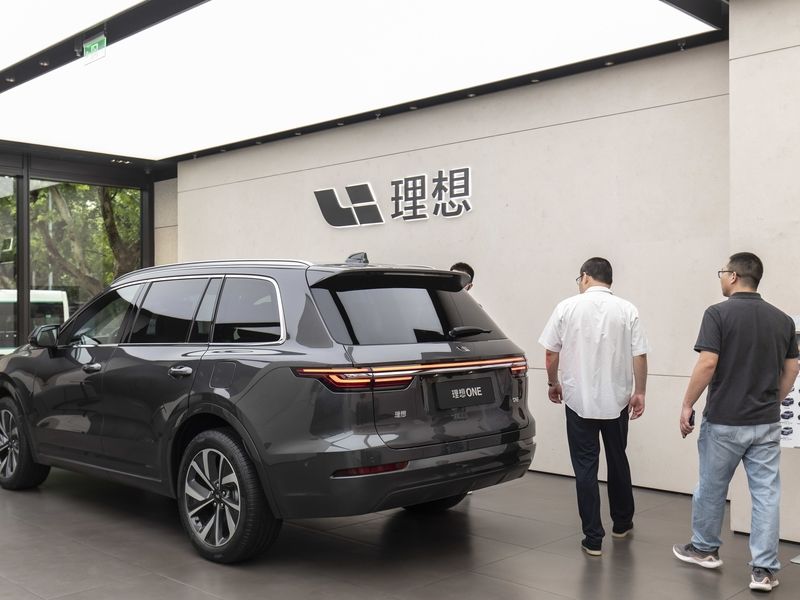
Chinese carmaker Li Auto Inc.’s second-quarter loss widened as the cost of making and selling electric vehicles took a toll on the company’s bottom line.
Li Auto posted a net loss of 235.5 million yuan ($36.4 million), compared to a 75.2 million yuan shortfall a year earlier, the Beijing company said in a statement Monday. Analysts had been looking for a 38 million yuan profit. Revenue for the period was 5.04 billion yuan, in line with analyst estimates of 5.01 billion yuan.
The carmaker, which has just one model for sale — the Li One crossover powered by an electric motor and gasoline engine — delivered a record 17,575 units in the quarter, a 166 percent increase from a year earlier. It shipped 8,589 vehicles to local customers in July, putting it on par for the first time with California-based EV pioneer Tesla Inc., whose local shipments plunged last month.
“The 2021 Li One received rave reviews and strong endorsement from users, resulting in cumulative deliveries of over 70,000 vehicles,” founder and Chief Executive Officer Li Xiang said in the statement.
Strong sales saw Li Auto forecast revenue for the third quarter that beat average analyst estimates. It now sees revenue of as much as 7.25 billion yuan for the current period, better than the 6.41 billion yuan the market expected.
Li Auto is the last of the three U.S.-listed Chinese EV startups to report second-quarter earnings. Xpeng Inc. reported a wider-than-estimated loss as research and development and marketing expenses climbed, while Nio Inc.’s loss narrowed on increased sales.
After listing in the U.S. last year, Li Auto earlier this month completed a $1.5 billion share sale in Hong Kong, following a similar move by Xpeng.
Like global carmakers including giants Toyota Motor Corp. and Volkswagen Group, Li Auto has been hit by the worsening chip shortage. At the time of the Hong Kong listing, company president Kevin Shen said the firm only had “visibility of the next two or three weeks” supply.
While still small in terms of deliveries, Li Auto has ambitious goals, betting on the growth of China’s EV market as drivers switch to cleaner and cheaper rides. Electric-car deliveries are forecast to more than triple to 6.2 million vehicles by 2025, when they will account for a quarter of all passenger car sales in the country, according to BloombergNEF.
By then, Li Auto aims to have 20 percent of the market, which it says will translate into annual deliveries of 1.6 million vehicles — about 30 times greater than it sold in the 12 months ended June 30.
For the third quarter, Li now sees deliveries of between 25,000 and 26,000 units, however it noted on Monday that the ongoing industry-wide semiconductor shortage due to Covid means that could change.
For the second quarter, operating expenses rose 45 percent while R&D costs climbed 27 percent from the first quarter. Selling, general and administrative expenses were 64 percent higher.
“The increase in selling, general and administrative expenses over the first quarter was primarily driven by increased marketing and promotional activities, as well as increased headcount and rental expense,” Li Auto said.

